Category Archives for Blogs

What Professionals Do You Need for Your Home Addition?
During home addition prep, one of the first questions you may have is who you’ll need to hire. For most home design projects, you’ll almost certainly end up hiring several professionals. Let’s look at each of the different professionals and the roles that they’ll fill in your home addition project.
Planning Your Addition: The Design Architect
When you’re undertaking a home addition, you may need to hire a design architect. A design architect creates building plans with best practices in mind, but they’re not needed for more basic changes to your home. Design architects are important for tasks such as changes to your layout or space conversions. Hiring a design architect is crucial if you’re moving plumbing or gas lines, working on landmark property, or you require building board approval. To find the right one, try to look at the architect’s portfolio to see if their style matches yours.
Building Experts: The General Contractor

If none of the above issues apply to your project, you may be able to go directly to a general contractor. A general contractor may handle all the steps of building your home addition, or they may sub out specific parts of the project to subcontractors, such as electrical, plumbing, or roofing. An experienced general contractor can help with basic challenges, provide creative solutions, and walk you through the process.
Finding Materials for the New Space: The Interior Designer
Whether you are making big or small changes, you can hire an interior designer to help you find the right lighting, finishes, and materials. They can help you with determining the look and flow of your space, planning for size and style of materials like lighting and windows. Interior designers also assist you with color selection and finishes for your addition that are permanent. They can even customize cabinetry and storage solutions for your specific needs. Additionally, some may even manage the purchase and delivery of these materials, appliances, and other fixtures, taking the burden off of you or your general contractor.
Running the Show: The Project Manager
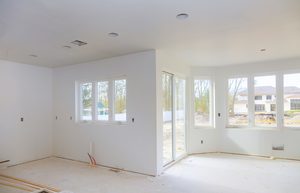
One professional that is rarely mentioned that does most of the coordination is the project manager. If you don’t want to handle the small details of your addition or hope your contractor gets it right, a project manager would be a good choice for your team. The project manager typically takes over the communication process between all the team members on your job and consults with you when a decision is needed. You’ll be happy to hear that you don’t need to understand the technical issues of construction or any other minutia. A good project manager will update you regularly and only bother you for major decisions. They handle the day-to-day operations for an amazing and hassle-free outcome.
When you’re planning a home addition, you’ll need a range of professionals to help you through the process. You can hire a design architect, a general contractor, an interior designer, and (should you choose to do so) a project manager throughout. At Drafting Cafe Architects, we can provide these professionals , making your project easier and more organized. Contact us today for a free estimate.

Home Remodeling Details No One Tells You About
When you’re working on a home renovation, the cost to build is an important part of your decision. But even though you may have considered a lot of the issues that may be important, there are some details you may not have thought about. Your builder will need to know details that will impact construction time and quality. What are these factors? Here’s a quick look to get you started.
Money Matters
The budget details: What’s part of the main build and what are considered extras that are not included in the estimate? By knowing which parts of the remodel fall under the cost to build versus extra costs, you’ll be able to better plan for your overall total.
Design and Plan Issues
Architectural drawings: Did you know that you need to have multiple sets of your remodel’s drawings? Your builder may need one or more sets, the architect may hold onto another and your building department may require a third.
Style preferences for design: There’s a ton of choices you’ll need to make during your remodel. Flooring, trim molding, doorknobs, light switches: all of these items and more can be selected to reflect your personal style. These are decisions that architects don’t make, but will need to be decided as building is taking place. These small decisions are often overlooked and can hold up the process when you don’t have a project manager helping prepare you.
Design issues: Will that drawer open fully next to your oven? Are the glass cabinet doors stylish or will your china look messy? Will the picture windows in the new master suite be an issue for privacy? These type of issues need to be thought through in advance to avoid costly change orders and delays.
Personal Style
Bathroom details: There are a lot of options available for your bathroom fixtures. What kind of toilet do you want – basic or one with a built in bidet? Do you want a vessel or drop-in sink? What about faucets: one handle or two? These seem like small details, but they can make a big difference on your remodel’s appearance and how your builder preps the space.
Tile patterns: If you want something beyond a simple layout, the tile pattern you choose can impact the cost. When tiles are mixed together or placed at angles, more cuts may be required, which requires more labor. It can also require more material. Some tile looks great in the showroom, but together don’t work. Take time to bring samples home.
Auxiliary lighting: Lights don’t have to only be where you would expect them. Do you want lighting in your closets? What about tray lighting for high ceilings or niches? Deciding where you want sconces located is also important. What style of lighting looks good throughout your home?
Though this seems like a lot of issues to deal with, a project manager can take some of the stress off of you. Drafting Cafe Architects is the perfect remodel architect, designer, and project manager, making it easy for you to get exactly what you want without having to deal with frustrating details. Please feel free to contact us today with any questions on starting your project.
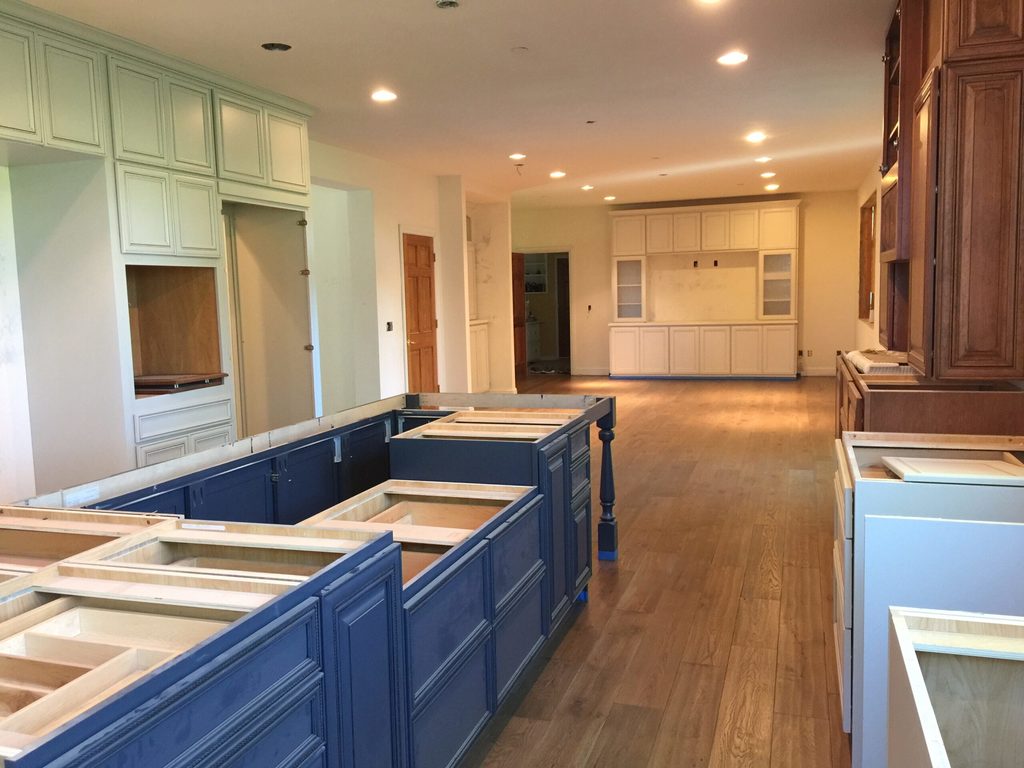
4 Important Home Remodeling Steps You Could Be Forgetting
If you’re thinking about a home remodeling project in the near future, have you considered how long it takes? What will your construction schedule look like? Whether you’re thinking about making changes to your home or adding an accessory dwelling such as an in-law unit, knowing how that process will affect your life while construction is happening makes it easier to plan for the work.
Consider Your Timeline
The building process can often take weeks to months. It depends on the complexity and size of the home remodeling project. The easiest way to take the guesswork out of the process and avoid surprises is by working with an experienced project manager. This person is someone who has worked in the industry and knows how the timing of construction projects works. But what’s involved in the whole process?
The Home Remodeling Process
To start, you’ll need to think about what you want to change or add. Are you making changes to your entire existing home? Will that call for you to move out for a long period of time? Are you adding on to your home? This can affect some areas of your home. But it does leave it fairly livable except for short periods of time. These differences don’t directly affect the construction schedule. But they can affect whether you can stay in your home while the changes are taking place.
Once you’ve chosen the basics, start consulting with an architectural design firm. They’ll take your ideas and turn them into a solid design. Architects not only create what you want but also make suggestions and catch possible issues in your plan. This process takes your first ideas and designs and turns them into a concrete, functional design. They’ll also create blueprints that should meet or exceed code rules for your area.
Obtaining Construction Permits
After you’ve approved the design, the permitting process starts. Either you, your design firm, or your contractor will apply for a building permit. At this point, your plans are checked, and any last-minute changes are made. All of this happens before the first board is cut or panel hung in your home. You should include these steps in your planning so that you are not kept out of your home any longer than needed. However, as you wait, you may want to begin packing away special or valuable items to a safe part of the house, storage unit, or temporary living quarters. This helps you avoid damage to your belongings.
Home Remodeling Begins
With your permit approved, your home remodel process can begin. Your project manager will give you a construction schedule. An experienced manager will add more time to the project schedule than may be needed. This allows space for common delays that can happen in material delivery, building, or inspections. Your project manager will act as your guide through the process, making it easier to follow. They will keep you informed of any delays beyond what they have prepared for and let you know when you need to make a decision that affects construction as soon as possible.
Are you ready to begin your home remodeling project? The experienced professionals at Drafting Cafe can help! Contact us today to get started.

Best Practices for Planning a Home Remodel
A home remodel takes a lot of planning. In fact, most successful large-scale remodels can take months of preparation before the actual work begins. Knowing in advance what kind of preparations your home improvement project requires can help you stay on top of the home remodeling process. Whether you’re about to embark on a bathroom remodeling project or entire home addition, here’s what you need to know.
Know Your “Must Haves” Vs “Nice to Haves”
If you’re remodeling on a budget, it’s important to fit in the most important elements first – and fit in the “nice to haves” with whatever money is leftover. Before you can prioritize your home improvement project tasks, you’ll have to decide what those priorities are!
Sit down with members of your household to talk through your upcoming remodel. Make a list of all the features you’d like to see when your home construction project is finished, then prioritize them by placing them in one of two columns – nice to haves or must-haves. Knowing this information in advance will help you during conversations with your designer, architect, and contractor when the time comes.
Alleviate Stress with a Project Manager
Home improvement projects can be stressful – but they’re usually less stressful when you have a project manager. Work with a capable and confident project manager. They’ll be able to direct your home improvement project, supply you with home remodeling tips, and resolve issues that may come up with your home remodel, so you don’t have to.
Design for Your Specific Needs
As you’re planning your upcoming home improvement project, think about your goals for yourself and your family in your home. Are you planning to have more kids? Do you need more useable yard space? Will you be inviting a senior family member to come live on your property in five years? Knowing these things in advance will help you make smart choices as you’re considering what features are most important to you during your home remodel.
Pad Your Budget for Overages
It’s common for construction projects to go over budget. Sometimes this happens because homeowners make last-minute adjustments to the project scope or features. Other times, this happens because the contractor discovers hidden damage that must be repaired before the project can move forward.
Plan to add at least 10% to the cost of your home improvement project before the work is finished. Set this amount aside just in case – you might be glad you did.
Plan for Additional Time
For the same reasons that home improvement projects sometimes go over budget, they also go over time. Don’t plan any large family gatherings or events on your property in the days just after your home improvement project is scheduled to be finished. Weather, material delays, and more can all cause your completion date to be bumped back unexpectedly.
Contact Drafting Cafe
Drafting Cafe can help connect you to a designer, a project manager, and a contractor to help get your home improvement project off the ground. You’ll be glad you did!
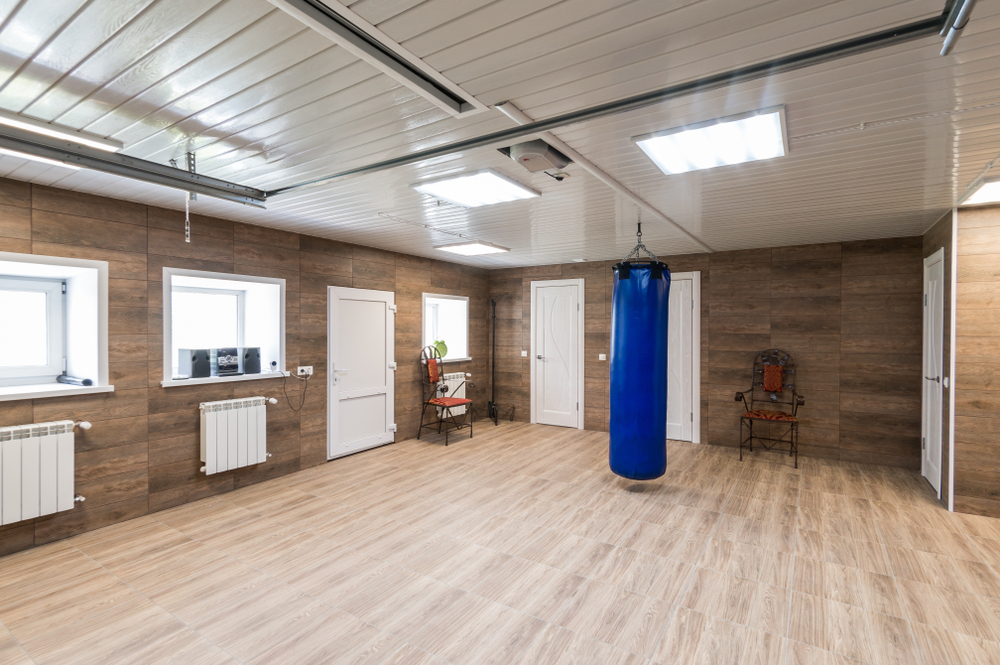
How to Plan a Garage Conversion
A garage conversion is a smart way to add useable space to your home, whether it’s for additional living space, an in-law apartment, a home office, or some other purpose. Before beginning this useful home remodeling project, it is helpful to know the process. This is a major remodel that involves working with a qualified designer and contractor. Finding the right professional who will do the job right can help ensure your remodel will succeed.
Hire the Right Architect and Contractor
Interview architects or design to build professionals first to discuss their experience and view their portfolio. Hire a communicative professional who displays good customer service and transparent billing practices. When viewing their portfolio, ask to see past work on garage conversions to confirm they’ve done this kind of job before and that the quality is to your liking.
The architect and contractor you hire should also ask questions about your end goals, budget, aesthetic preferences, and timeline. They should be curious about your hopes and discuss any concerns that they may have about your project.
If it seems like the professionals you’re considering hiring don’t understand your project or are disinterested in listening to your concerns, then that may not be the right professional for you.
Garage Conversion Elements to Consider
There’s a lot to think about when converting your garage into a living or home office space. Some of the elements to consider are listed below.
HVAC
To ensure that your new garage living space is comfortable year-round, your construction team will need to tap into your home’s HVAC (heating, ventilation, air conditioning) system. This could involve replacing your air conditioner and furnace or installing a mini-split heat pump that can keep your new space comfortable without drawing from your current HVAC system.
Plumbing
Are you going to install a bathroom or kitchen area in your garage? If so, then your construction team will need to add plumbing. This can impact how long your garage conversion will take and go a long way to make your garage space more useful.
Insulation
Finishing the walls is another thing that your builder will need to do to keep the space comfortable. Adding insulation helps keep the space energy efficient.
Access
Depending on how you plan to use the space, you may want to remove the door into your house and create a separate entrance. If you are planning for an ADU, you will want your guests close, but still have their privacy.
Garage Door Removal
Removing the garage door is an important part of insulating your new space since garage doors tend to be less energy efficient than normal walls. Talk to your architect about options for ensuring that the new wall on your home will look natural and less like a garage than it used to. Or, you may want to incorporate the doors into the design. There are many possibilities.
Permitting
Garage conversions almost always require a permit, and any professional working with you on this project should alert you to the permitting costs and procedures. Getting a permit will help protect the value of your home. An unpermitted conversion could make your home harder to sell when the time comes.
Contact DCA for Your Garage Conversion
Are you ready to convert your garage living space? Call the experts. Make an appointment with Drafting Cafe Architects to discuss your upcoming home improvement project.
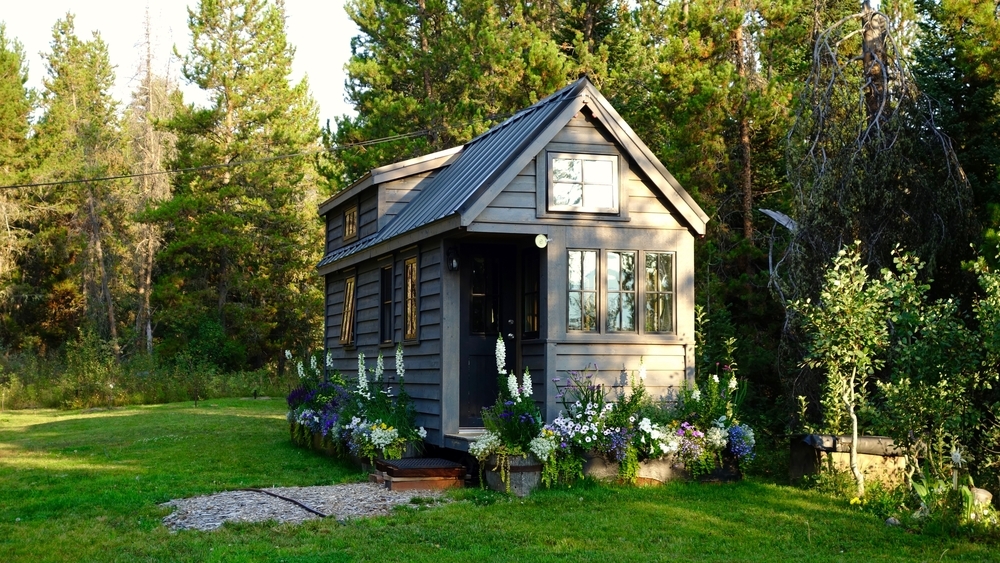
The Truth About ADU Costs
Accessory dwelling units are increasingly popular throughout California as counties are encouraging in-building to create more housing. If you’re considering investing in an ADU in the Bay Area, no doubt cost is one of the most important factors in your decision-making process. Because this is a significant investment of often more than $20K for our clients, you should prepare yourself for the realities and the chances of surprise costs.
Architectural ADU Costs
Before the building can begin, you should understand that there are some costs associated with designing and permitting well before the foundation is laid. The very first thing you will need to do is hire an architect to create the plans. Choosing an experienced architectural firm is an important step in the process. You’re essentially building a small home from scratch, so the better prepared you are, the better the process will be.
Not all architects are ADU experts, and that can end up costing you more over time. It would be best if you find an architectural firm that understands ADUs from planning to construction. If you have the right partnership with your architect, they can help you stay on budget while designing all of the amenities you want. If you have a custom design in mind, costs will vary on size and your ADU’s overall vision. The more complex and customized, the more it will cost. We offer pre-designed ADU plans that are more affordable but offer the same quality that you expect from our team.
Other Costs
The additional things that will have an impact on your budget are obtaining permits for building and hiring a contractor to do the unit’s construction. For many homeowners, these are not tasks they have experience doing.
Once you have plans from your architect, you will need to get them approved by your municipality or county. Some architects may even charge extra for this step, so be prepared for that cost. In the Bay Area, seismic concerns may require soil tests to assure the neighboring properties that adding to yours will not affect there property.
Hiring a builder that understands the ADU niche is also another way to stay on budget. Depending on the location and size of your project, it could require some pretty extensive infrastructure additions: upgrading electrical, sewer, and water. Some areas have tight lot lines and could require making way for large equipment for digging foundations. You need a quality construction partner that will respect your existing property too.
Avoid Budgeting Surprises
One way to prepare for the cost reality of an ADU is to find a firm that can handle everything for you. Hiring several firms to handle each step in the process can drain your time and budget. DCA’s end-to-end project management services help clients maintain a predictable schedule and budget while having an advocate working with your builder for all those last minute decisions.
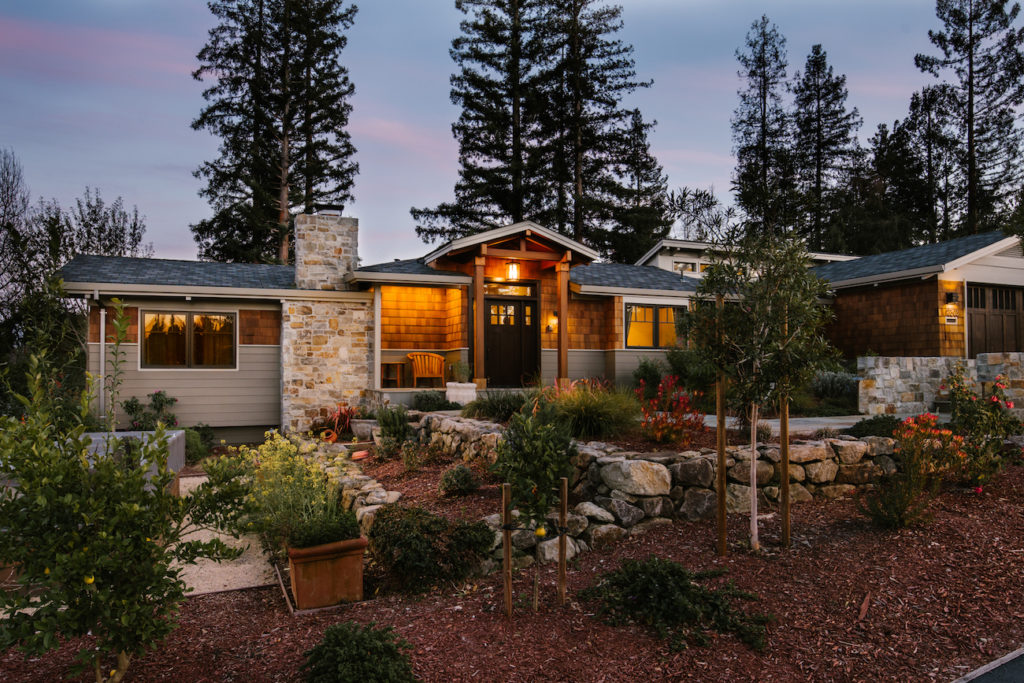
The Best Architectural Firms in the Bay Area
Drafting Cafe Architects has been named one of the best residential architectural firms in Union City, California. Without a doubt, DCA sets a higher standard for unique styles with several design-to-build options not typical in the area. The firm, founded in 2010, focuses on design, construction, quality, efficiency, and sustainability for clients throughout the Bay Area.
Customized Approach
As a design-build pro with a mindset for producing signature styles, DCA founder Ethan Andersen has successfully created a business distinctive from other architectural firms. From early on, he understood that the need to focus on a personalized approach for homeowners. As a result, Andersen and his team built DCA’s foundation on facilitating, not dictating, architectural services for clients. In particular, this individualized approach has been a significant portion of the team’s architectural offerings throughout the years.
Drawings with Depth
Most importantly, every residential project starts with a dream, a plan, and drawings that bring it all together. DCA takes pride in providing modern drawings for projects of all types. Consequently, our ADU plans are not the industry norm. They highlight an array of living options that work for various residential needs. As a result, clients enjoy seeing exactly what they have envisioned with our custom-designed and organized packages.
Beauty and Functionality
Furthermore, through customized drawings, DCA has a reputation for turning dreams into reality. They offer vision, dedication, and a deep understanding of customer needs. DCA’s design-to-build options make things smooth for clients by taking the complications out of the process. Particularly, the team handles the entire process, from picking out the materials that make the design work, such as paint, tile, and other structural items. They also work directly on behalf of the customer to ensure that the builder has everything to deliver the best final product.
A Different Kind of Architectural Firm
To stand apart from the crowd, DCA offers architectural services unique to the Bay Area. From structural engineering to innovative configurations, their intricate detail and personalized service stand out from the competition. California has its own set of nuances, and it takes expertise to walk homeowners through the planning and building process. For homeowners looking to get a specific result, working with an experienced design team like DCA is essential.
Remodeling Projects
No doubt, kitchen and bathroom remodeling are part of our portfolio. However, because kitchens are a focal point in the home, it can be challenging to add a style that is also functional. With this in mind, our team keeps things modern while using all available space. Our skilled team keeps your goals and dreams at the forefront to ensure our designs are everything the customer wants and infused with everything they didn’t know they needed.
Creating and executing unique architectural design takes skill and expertise. Working with almost every municipality on different projects throughout the Bay Area, the DCA team sets a high standard on all projects. Contact an associate at Drafting Cafe Architects today for more information on our work performed by our Bay Area architects.

Can You Actually Make Money on a Home Addition?
Renovating your home is one of the biggest investments you can make. During the process, you can do several things that will help you recoup your investment while improving your property’s value. The key to improving your home is adding space, using a custom design, and increasing functionality. While many people complete a home addition to put their home up for sale eventually, that isn’t the only reason to consider an addition.
During a home addition, any space added can be turned into a money-making opportunity. One of the best ways to add space is an Accessory Dwelling Unit (ADU). These ADU home additions are a popular way to add an income stream in the Bay Area. During your home addition, these can be built in the back of the main home for rental unit opportunities. Your new ADU can immediately pay for itself by creating a new stream of rental income.
Drafting Cafe Architects offers pre-designed ADU house plans that save time and money. These unique, pre-designed units have a set timeline, price, and design specifications that are on-trend and modernize your home. While there are no one-size-fits-all solutions, the DCA team can pair you with one of our remodel architects to help you decide which plan would work best. The architect will also be able to help you set an ADU budget.
Is Building an ADU Worth It?
Absolutely. You’ll increase your property value while creating new streams of income. Having both short
and long-term rental income can help offset the day-to-day expenses of the additional space. As travel continues to increase as Covid-restrictions ease, people will be looking to visit the Bay Area. This is an amazing opportunity to take advantage of the increase in tourism dollars.
The Home Addition Planning Process
There are a few things to keep in mind when planning a home addition project, especially one involving an ADU. Consulting with a DCA renovation architect helps determine what needs to be done, including the drawings and specifications, determining the budget, and deciding on a timeline that accommodates your needs. Understanding what a home addition entails can provide a snapshot of what to expect and what you should avoid.
The process of building an addition or an ADU can be time-consuming and tedious. The structure must be permitted based on local zoning and building codes, but the DCA team customizes these plans to meet your needs. When building an ADU, the height, size, and location of your property matter. With various pre-designed ADU plans available to accommodate the use, it will be easier to determine what works and what does not.
Once you start planning, the ADU budget will become clearer. The amount needed to complete the project varies based on the type of renovation, addition, and size. Having a clear idea of how the addition of a new structure will help justify the cost because spending more does not always end up in a higher return on the investment. It’s important to remember you are building another home, not dropping in a shed. The costs will be similar to building a small home due to all the infrastructure additions that are probably not there today: plumbing, sewer, electric, cable and more.
The DCA Difference
Creating an addition can add discretionary income to build savings, help pay monthly expenses, or pay off outstanding debts without impacting the current budget. The expert team at Drafting Cafe Architects is the best choice when it comes to planning and executing the design and building of your ADU. For more information on a money-making home renovation and addition, contact our team today.

How to Design an Entertainment-Ready Kitchen
As you entertain guests at your home, your kitchen serves as a central hub for all the action. If it’s not entertainment-ready, your party could come to a grinding halt as guests pack into that space. Thankfully, you can change all that by putting entertainment at the forefront of the design for your kitchen remodel. Here are some tips to help you get started.
Make Room to Mingle
The kitchen serves as the best place to mingle while preparing drinks, dinner, and dessert. Even those who aren’t helping make the meal are often socializing in or around the space.
You can give everyone room to interact seamlessly with an open concept kitchen design. With this layout, the kitchen space flows into the dining room, living room, or other areas of the home without barriers getting in the way of the fun. You can also use color to your advantage to keep the spaces well-defined, yet smoothly integrated.
Add Multiple Prep Stations
If you are lucky to have many chefs in your home, you will want space for each to prep and contribute to the meal. This includes having different areas of counter space and possibly multiple sinks. Consider each of these a work station that may have unique needs.
Each station will require task lighting, at least one outlet in reach, and the right work surface for the job at hand. If you bake, you can also integrate heavy appliances like mixers into the lower cabinetry where they can be lifted into place for use.
Integrate Flexible Spaces
You cannot always anticipate how you’ll use your kitchen space, so be sure to integrate flexible spaces into your design as well. Your kitchen island, for example, can be a multi-tier design. With this option, you can use it as a prep space, serving spot, and dining area with just a few small changes.
You can also consider putting in a low side cabinet that acts as a serving space during parties and a laptop desk during the day. With plenty of flex spaces included in your design, you can easily go from daily life to big parties.
Mount Cabinets Up High
When entertaining often, you need the right cooking tools, serving dish sets, and table setting supplies for each occasion. Unfortunately, that can lead to a massive amount of clutter. So, to make sure you have enough storage while still improving your kitchen design, consider putting in tall, ceiling-height cabinets.
By mounting cabinets high up on the walls, you can boost your storage area and make the space look much larger. Just make sure to keep your lesser-used items on the upper shelves. Also, don’t forget to have a sturdy step-stool on hand.
Entrust the Job to an Architect for Kitchen Remodel Perfection
If you’re ready to reimagine your kitchen for hosting, tap into the endless possibilities with help from experienced architectural designers, like Drafting Cafe Architects. We will help you come up with excellent entertainment-ready kitchen designs.

What You Need to Consider for Your Home’s Addition
By investing in a home addition, you can purposefully expand your living space and bring your vision to life. As you begin defining your budget, dreaming up your ideal design, and moving through the build, there are a handful of important things to consider. With these in mind, you can anticipate just what to expect and hire the right professionals for the job at hand. Here’s what you need to know.
Property Taxes
When defining your home addition budget, it’s important to remember that your property taxes could increase as a result of this project. These taxes are determined by your home value and large-scale additions can raise that value by $40,000 or more. For every $10,000 increase, expect to see your annual property taxes jump by at least $500, although the exact amount largely depends on the local tax rate.
Foundation
The foundation accounts for up to 15% of the total cost of your home addition project, and for good reason. This important element serves as the base of your build, providing the ideal level of stability and support. The type of foundation you need and its overall cost depends on what the rest of your home uses. The most common types for additions include pole footings, slabs, and crawlspaces.
Electrical and Plumbing
Your builders will likely need to extend your electrical and plumbing connections into the home addition space. If you have a vented HVAC (heating, ventilation, air conditioning) system, they will also need to extend the vents and confirm your furnace and air conditioning unit can handle the increased load. Since these fixtures are hard to change once in place, make sure that you’re satisfied with the proposed position of the light fixtures, electrical outlets, and vents before those sub-contractors leave for another job and the dry wall begins.
Flow of Your Home
A home addition is a huge renovation project that can either disrupt or improve the flow of your living space. For the best results, the rooms should naturally flow into one another as should the building materials. You can eliminate surprises that many homeowners experience using our design-build process, the service of our team throughout your build to maintain a level of project management and communication between you and your contractor. For example, the paint, flooring, and trim should never abruptly begin and end. You can get a perfect match or go with a pleasing contrast by comparing samples to the original materials in natural and artificial light. This is something we can watch out for and make sure your project has smooth transitions.
Local Ordinances
While planning your home addition, you have to keep local ordinances in mind, like setback restrictions, easements, and permit requirements. With a skilled architect and builder by your side, you can create the perfect design that works with your property characteristics, goals and local codes. During that process, those experts will also look up the location of your utility lines before finalizing your plans.
Ready to Start Your Home Addition? Partner with a Skilled Architect
Although this all might seem like a lot to think about, taking the time to consider all the different aspects of your home addition can help the project go smoothly. You can also partner with our full-service architecture and construction firm at Drafting Cafe Architects to streamline the process from start to finish. Get a free estimate and have us save you a spot on our schedule.
